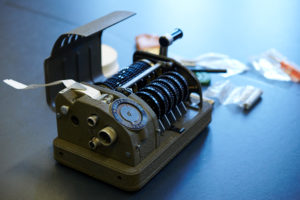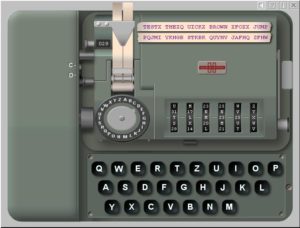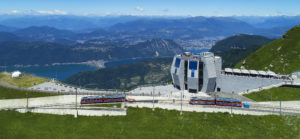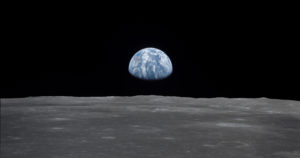
The CX-52 cipher machine and an espionage scandal
The CX-52 is one of the first cipher machines produced in Switzerland by the company Crypto AG. It is a much sought-after collector’s item and symbolises the greatest espionage scandal since World War II.
The device has a harmless appearance, rather like a cash register: you set the letter you want to encrypt by means of a dial, operate a lever on the right-hand side and then read off the encrypted letter from the outer edge of the disk. The encryption is regulated with the six wheels visible on the front of the device. The CX-52 was one of the first devices that the Swede Boris Hagelin and his Swiss company Crypto AG put on the market in 1952. When operated correctly, it was completely secure. Hagelin later produced other versions of the device that were easy to crack.
Today, the story of Boris Hagelin and his company Crypto AG reads like a spy thriller: Boris Hagelin (1892-1983), born in Russia, was an electrical engineer, who in 1922 joined the Swedish company AB Cryptograph, which at that time belonged to the Nobel family. He was soon in a position to take over the company, running it under the name AB Cryptoteknik. He developed a range of cipher machines, one of which he sold to the US Army in World War II. The US Army produced more than 140,000 of them under the name M-209. After the war, Sweden placed restrictions on the export of cipher machines because they were viewed as armaments. Boris Hagelin therefore moved to Switzerland and founded Crypto AG in 1952.
Boris Hagelin’s business had brought him very good contacts in the United States, in particular with the legendary cryptologist William F. Friedman (1891-1969), who also originally came from Russia and who later headed the cryptography department of the American secret service, the National Security Agency (NSA). In 2015, the NSA released thousands of Friedman’s papers, 400 of which relate to Boris Hagelin and Crypto AG. Today we know that: Friedman and Hagelin agreed on extensive cooperation as far back as the early 1950s and exchanged information regularly.

At first, the NSA did not reap many rewards from the CX-52: it was difficult to crack. However, they soon found a way around the problem: if the CX-52 was not operated properly, it was easy prey for the secret service. This is why the NSA produced ‘alternative’ manuals for Crypto AG. In later production series, Crypto AG made different versions of the machine, secure and less secure. The secure ones went to the NATO countries and Switzerland, while all other countries received less secure machines. From then on, the American secret service had a say in all developments at Crypto AG.

Many questions still need answers: What did the Swiss authorities know? How will the scandal affect Switzerland’s neutrality? Who leaked the secret papers to the media and why? What was the historical importance of this operation?
The company Crypto AG was sold in 2018 and has since been run as two independent companies that have no links with the old Crypto AG.
Declassified NSA documents concerning Boris Hagelin’s correspondence are available on the NSA website.




